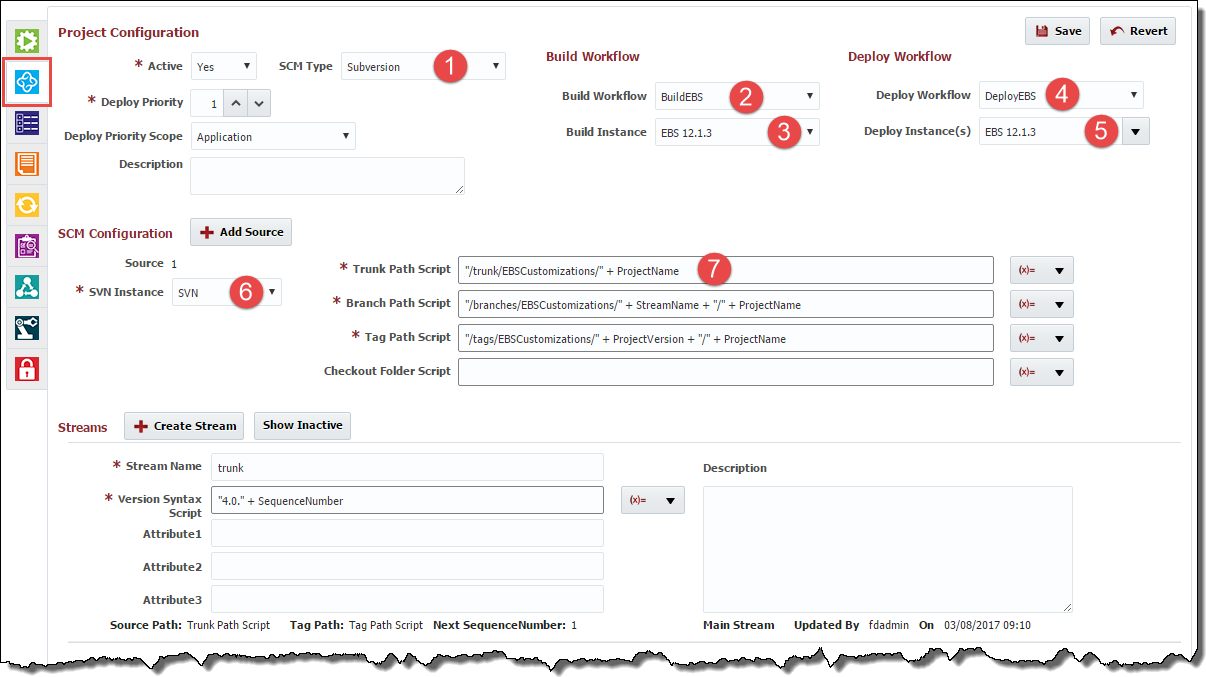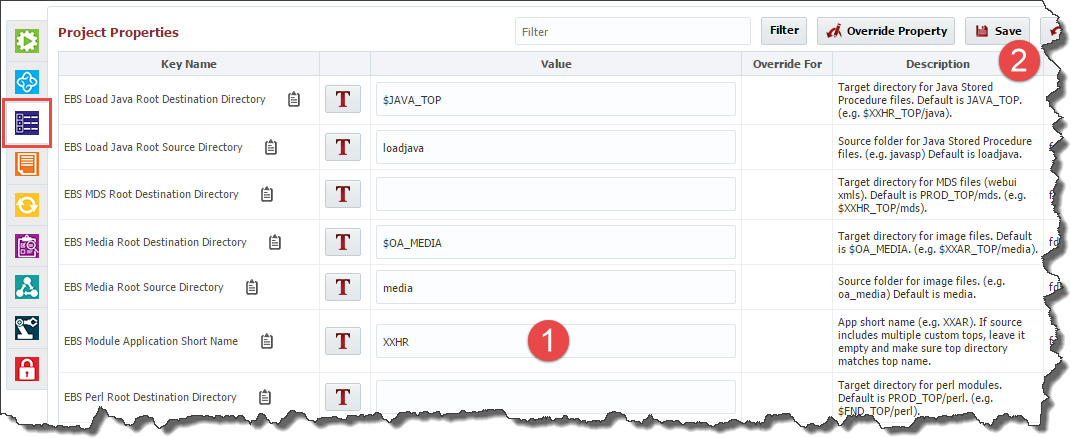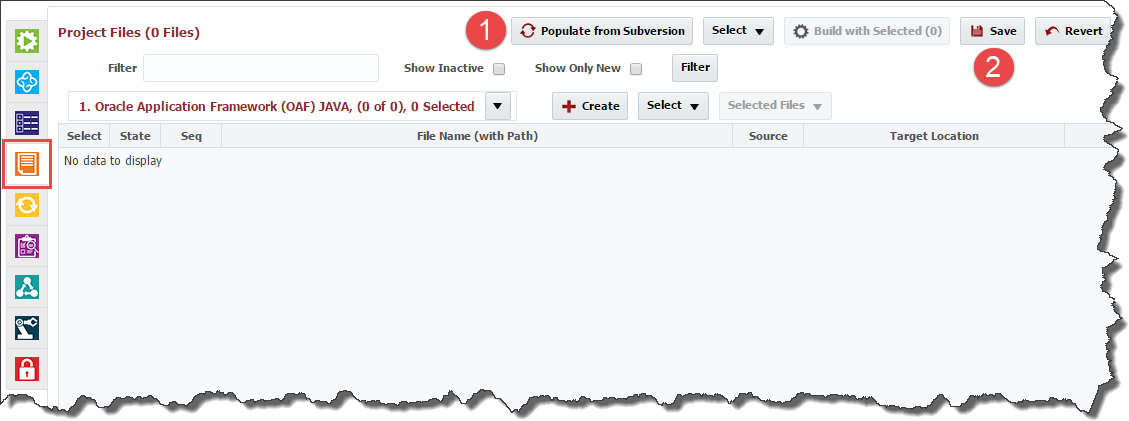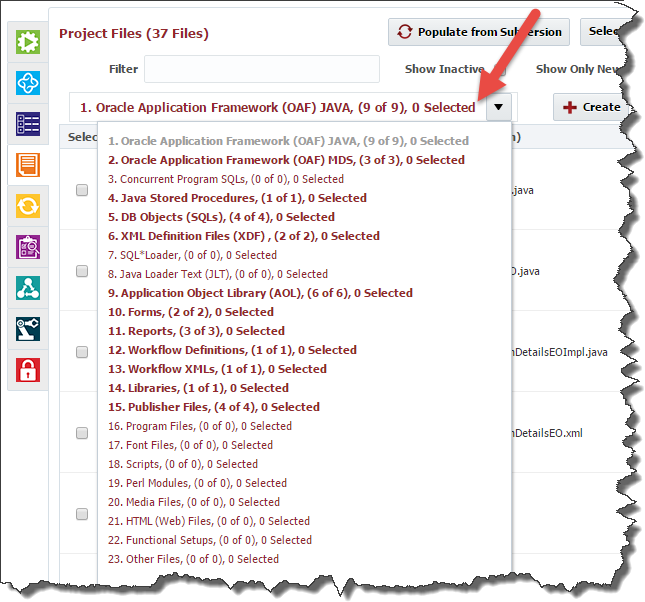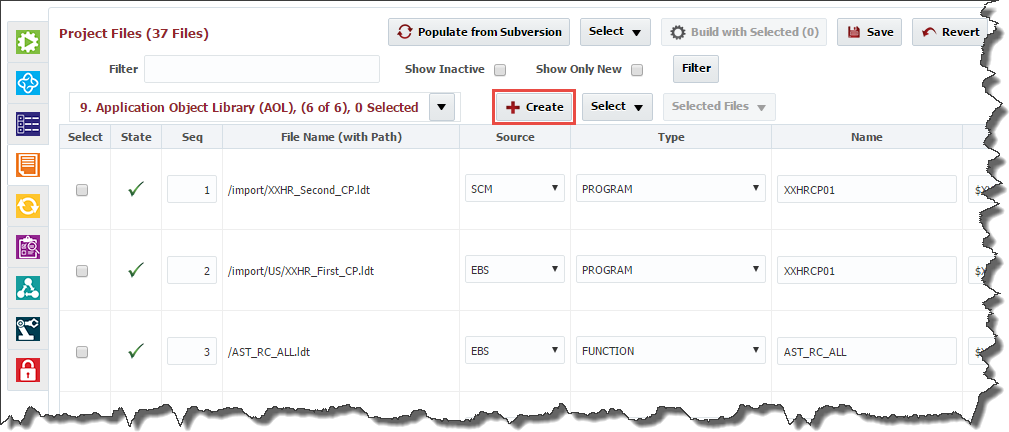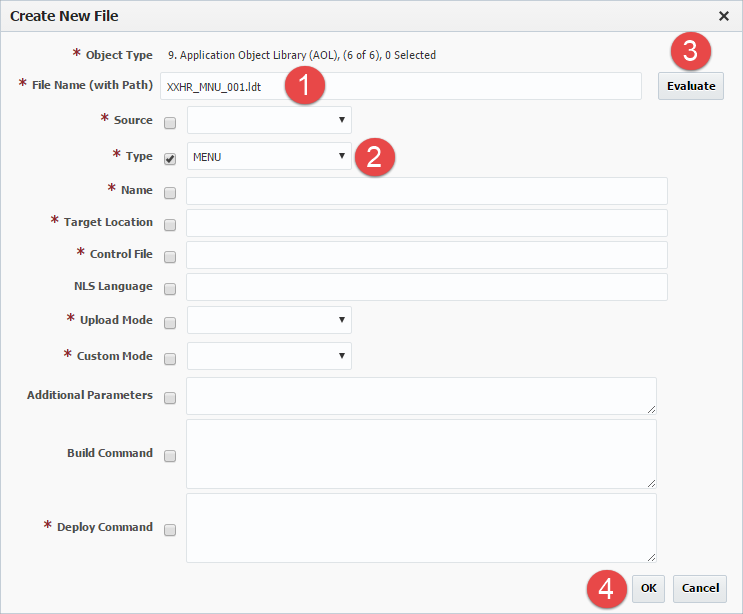...
Click the light-blue Configuration tab to enter the required configuration.
Enter the configuration information as shown in the image above.
...
Click the purple Properties tab to enter further configuration.
Enter the Project Properties information as shown in the image above.
...
For more information regarding Project Properties refer to the EBS Plugin Guide.
| Anchor | ||||
|---|---|---|---|---|
|
Configure EBS Objects and their Attributes
...
For partial EBS deployments, you will have an additional Project Files tab, denoted by the icon. This tab gives you the ability to define the EBS files (candidates for creating packages) and verify their metadata attributes. You can also edit these attributes and build/deploy commands as required.
...
Click on the Project Files tab. Click the Populate from Subversion button (will say "Populate from Git/CVS/TFVC" depending on configured SCM Type). In the window, select the SCM stream you want to retrieve the files from and click the Populate button. All customization files will be retrieved from the SCM, and their metadata will be auto-discovered/defaulted.
| Info |
|---|
For Git, the Git executable must be installed on FlexDeploy server and it must be accessible in its |
When populating for the first time it can take up to few minutes, depending on the number of files you are managing. After completion you will see the files as shown below.
Each of the files are identified as belonging to one of the supported EBS object types. Verify the metadata for each of your files according to its object type. You can click on the File Types drop down and view the files of different file types as shown below.
| Note |
|---|
| Each object type displays a sequence number based on file type, and each file also has its own sequence number within that type to identify its dependencies. You can change the sequence number if you would like to change the dependencies. |
Make changes as required and click Save. As with Populate from SubVersion, it may take up to a few minutes the first time if you are managing very large sets of files. All the attributes are validated and error(s) will be displayed if there is any missing information. You can fix any errors and click Save again.
...
You can directly create files by clicking on the Create button. This is useful if you would like to download AOL files from the source EBS instance at build time rather than sourcing from the SCM. To create a reference to an AOL file, click on the Create button.
The following form will be presented to create the new file. Enter the file name you would like to create (eg: XXHR_MNU_CP011001.ldt – extension is required) and click the Evaluate button. By default, it generates all details for a Concurrent Program. If your AOL is another type, select the type from the Type dropdown and click Evaluate again.
- Enter the name of the file with extension
- Select the Type from the drop down. Eg: Program (for concurrent program), Menu, Form etc.
- Click on Evaluate button
- Verify all the details (change as needed) and click OK. (you can re-evaluate the calculated fields after modification by selecting the Keep Current Value checkbox, and clicking Evaluate).
...

